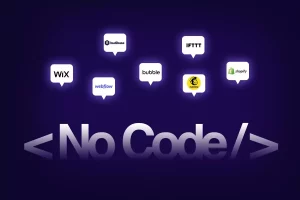Few things are as upsetting for guys as having a haircut that does not suit them. I reasoned that an app that allowed me to test out various haircuts would be useful as a college student. The issue was that I was unable to code. Actually, I had no idea what software engineering was, but I was certain that an app could resolve this issue. I was never able to create or learn about such an app, so I made do with informed estimates and a lot of heartaches.
You probably have experience with comparable circumstances. You could have intended to develop a website for your church, an app to manage your finances or a company website. But what if I told you that you could construct websites and apps without writing a line of code? In any case, you probably didn’t build it because you couldn’t write.
Disha, a one-page website builder that allows entrepreneurs to establish a website to sell their goods and services without writing a word of code, was bought by Nigerian finance behemoth Flutterwave in November 2021. The firm had previously said that its services will be discontinued before the end of the year.
One of the numerous no-code technologies that enable people to create solutions without writing code is Disha. What, though, are no-code tools? Why should you be concerned with them and how do they function?
What are tools without code?

Platforms known as “no-code tools” enable users to create software without ever writing a line of code. The most well-known no-code tools are Typeform, Zapier, and Bubble.
In reaction to the skepticism around the expansion of software businesses, Marc Andreesen, co-founder and general partner of venture capital firm Andreessen-Horowitz, said that “software is devouring the world” in 2011.
He said that software businesses were upending a variety of sectors, including entertainment, music, and retail, and he urged detractors to first comprehend the phenomena.
With software giants like Microsoft, Meta, Alphabet, and Amazon among the most valuable corporations today, much of what he stated still holds true eleven years later.
But many individuals lack the technical abilities needed to start a software firm. Additionally, there is a shortage of software engineers, which results in the abandonment of many potential products since the majority of individuals lack the necessary technical expertise.

These occurrences are kept to a minimum via no-code tools. No-code tools, as their name suggests, enable non-technical users to create software solutions without writing any code. It’s critical to remember that while no-code tools make it possible for non-technical people to create technical tools without writing code, code is still required for the solutions to function or even to exist.
What is the movement behind no-code?
Software solutions often call for feeding a computer instructions in a language it can comprehend, known as code. On the other side, drag-and-drop functionality is used by no-code tools to let designers add or delete pieces from their creations.
No-code tools have been around for a while, but during the coronavirus epidemic, their use skyrocketed, probably as a result of everyone having more free time. An analysis by Zapier found that 82% of no-code users began using these tools during the epidemic and that 85% want to use them more often during the next year.
Additionally, according to Gartner, by 2025, 70% of new apps created by businesses would use low- or no-code technology, up from 25% in 2020. More passengers joined the no-code train as a result of the epidemic, but that is not what has kept them there.
The Zapier analysis also reveals that the majority of survey respondents chose no-code technologies because they wanted flexibility, time savings, and the ability to automate certain processes. 74 percent of respondents said they chose no-code because they wanted to construct on their own terms; 83 percent began using it to finish activities faster, and 76 percent wanted to automate duties in their personal or professional life.
How safe are tools without code?
Globally, cyberattacks have increased as more individuals work from home as a result of the coronavirus outbreak. Governments have seen a 1,885% increase in ransomware assaults, according to SonicWall’s 2022 Cyber Threat Report.
Cybersecurity is one of the most crucial factors for companies with a digital presence, and there are concerns regarding the security of no-code technologies. Only 7% of respondents to a recent Dark Reading study said they had no worries about the security of solutions created using no-code technology.
The main security issue stems from a company’s inability to see the platform’s source code, which makes it difficult to identify mistakes or defects that might endanger its operations. Additionally, companies have no control over the security of these platforms, and assaults on the no-code platform might have an impact on all the firms using it.
Fortunately, there are several guidelines for safeguarding your company or merchandise. One is that you should only employ software from trustworthy vendors, and ideally, these vendors will have third-party certificates attesting to the security of their platforms. You should also get a software bill of materials that provides information on the program and any potential security holes.
What platforms without code can I use?
You may create a broad range of enterprises using the various no-code solutions available on the market. The most well-known ones include Bubble, Webflow, Carrd, Airtable, and Zapier, to name a few. Disha, the no-code platform previously mentioned, is closer to home. Additionally, one of the co-founders of Disha, Evans Akanno, formed the newly launched Vzy.
Will using a no-code technology result in investors funding my company?
Building on a no-code platform can be one of the numerous reasons why investors decide not to fund your firm. The amount of money invested in no-code builders, however, may be a sign that investors are open to backing firms created using these tools.
Investors may wager on your business because Webflow and Builder.ai both received $140 million and $100 million from investors in 2022, respectively, while Bubble raised $100 million in 2021. What’s more, Qoins and Teal both utilize Bubble and have together raised more than $6 million.
Will developers be replaced by no-code?
No-code tool advocates contend that they will displace developers. That, however, is unlikely to occur. Software developers will continue to be in high demand as long as no-code tools are being created using code.
No-code solutions will enable individuals to concentrate on the most difficult and important jobs rather than replacing engineers.
The research reveals that many technical people employ no-code technologies, despite the fact that many technical people may laugh at working using no-code tools.
Only 12% of no-code users polled by Zapier lacked any technical expertise, proving that no-code solutions are useful to even technical users.
What are some uses for no-code tools?
With no-code tools, there is essentially no limit to what you can create. With the help of the available tools, you may create websites, landing pages, newsletters, e-commerce sites, online learning systems, and markets. Additionally, there are no-code technologies that make it possible to develop AI-based solutions.
The messaging service Ozi, the financial firm Qoins, the online coding school Lambda, and the no-code constructor Makerpad are a few famous instances of no-code solutions.
No-code building tools have several benefits. For instance, non-technical people may create valuable enterprises in a small fraction of the time needed by developers and without having to learn how to code.
No-code solutions also speed up businesses’ time to market, allowing business owners to assess customer interest in their goods rapidly. No-code tools may be used by current organizations to create internal tools or test new product lines without adding additional work for the engineering staff. In comparison to employing a developer or team of developers, they are also less expensive solutions.
Despite the many benefits of no-code solutions, one of the biggest disadvantages is security, and using a no-code platform compels organizations to rely on the host’s security.
Businesses can thus be exposed to assaults on the no-code tool they use. Additionally, companies may find it challenging to migrate between no-code platforms due to the absence of platform interoperability and the possibility that startups may not control their source code.
Due to the limited flexibility that no-code platforms provide, companies may be constrained in the modifications they may make to their website or mobile application.
The most crucial thing is that you find a solution for your company or clients, whether you want to utilize a no-code tool or write code. If coding is not used to address an issue, it is pointless. Do you now use or intend to employ no-code tools? Post a comment and let us know.
Do you have any information or event for PJTV NEWS to publish or cover? Kindly Call us on +2348063615010 or send us message on Whatsapp number +2348063615010 or send us an email pjtvnews@gmail.com


